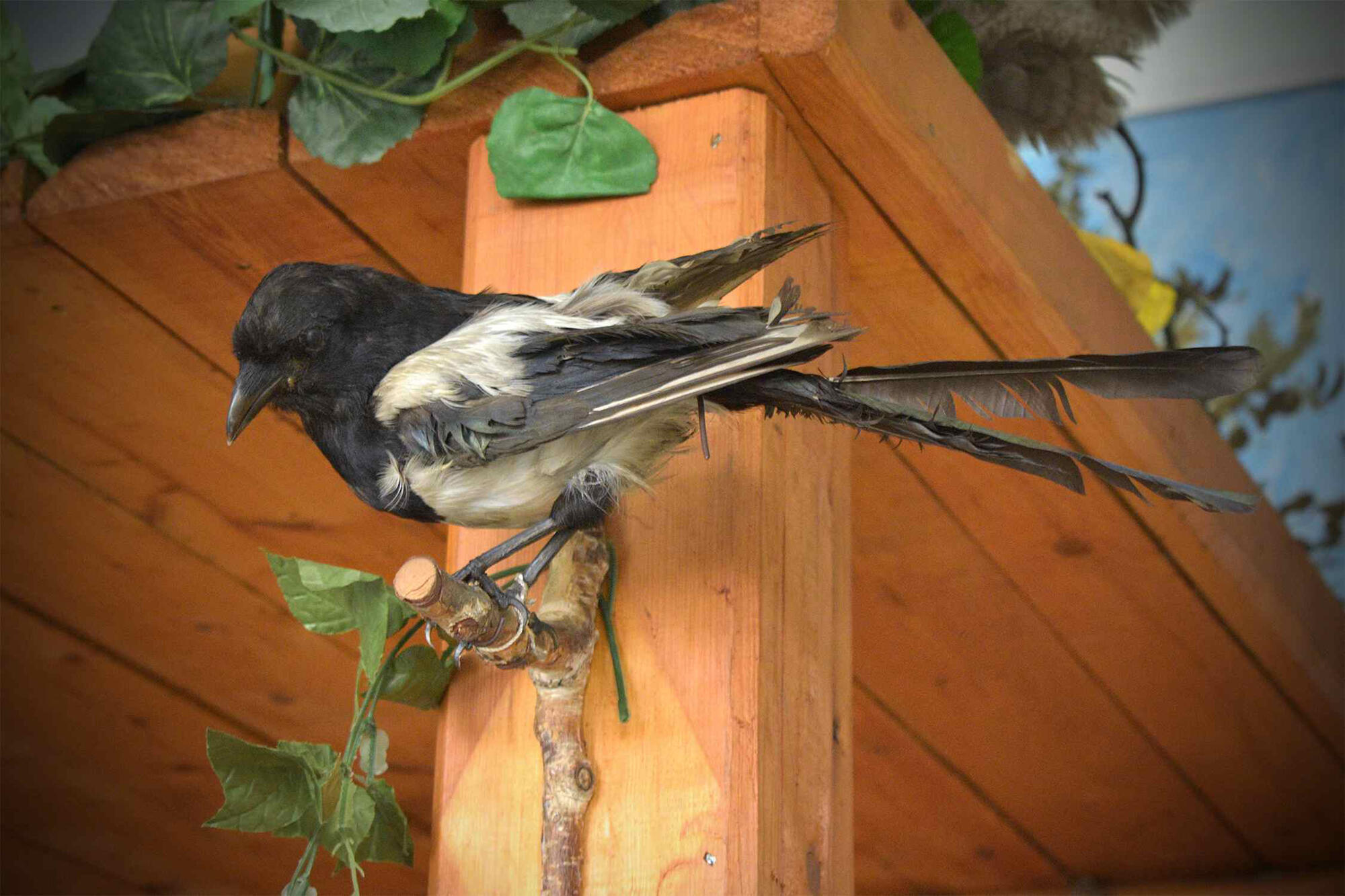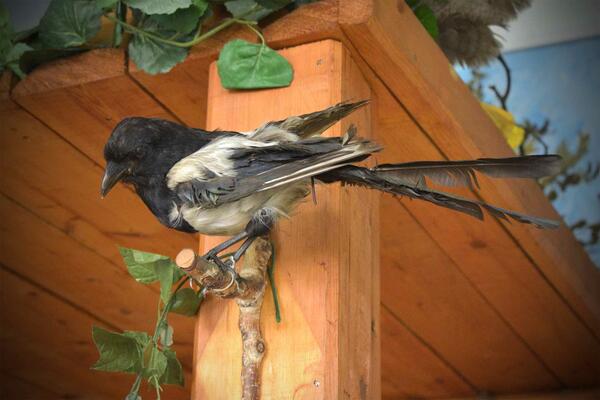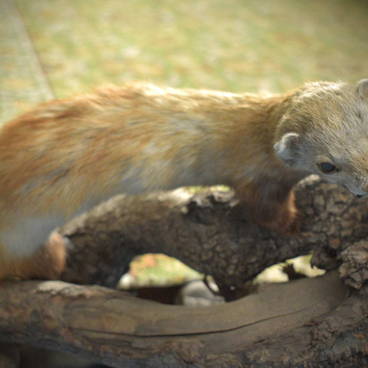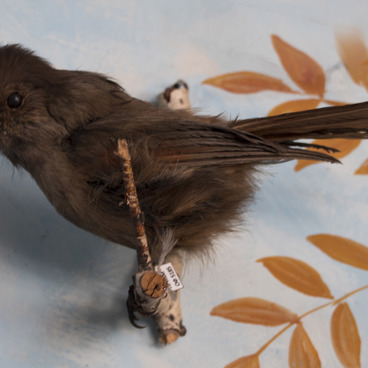The Eurasian magpie is a well-known bird in the crow family of the order Passeriformes. Its closest relatives are crows and Eurasian jays. The bird’s uniquely colored black and white plumage makes it easily recognizable. Its head, neck, back, chest and tail are black with a metallic and, at times, dark and light bluish hue, which is particularly noticeable in sunlight. The stomach area, sides and shoulders of the bird are white. Sometimes, the ends of its wings are also white. Eurasian magpies can reach up to 50 centimeters in length, although on average they are approximately 40-45 cm long. Their wingspan is 50-70 centimeters, and in rare cases, it can be up to 90 cm. The bird’s fairly long, tapering and nimble tail is almost 25 centimeters in length, accounting for half the size of the bird. Males, weighing approximately 230 grams as a norm, are slightly heavier than the females, which are on average about 200 grams. On the ground, the Eurasian magpie moves by hopping around on both of its legs, while holding its tail up high. In the air, the bird prefers to plan its movements, so its flight looks labored and meandering, at times, it has been compared to diving.
The magpie’s usual habitat is open spaces where it is easier to find food. In essence, the bird is an omnivore. It can eat grains and seeds in the fields, peck out insects and parasites out of coats or fur of grazing cattle or large wild animals, or readily consume worms, caterpillars and larvae that it is skilled at digging out of the ground. Aside from insects, its diet includes small rodents, frogs, snails, fairly small lizards, fledglings of other birds and eggs from their nests.
Eurasian magpies partner for life. They both always take part in the construction of their nest. Their domed abodes have an entrance at the side and an adjoining clay tray. Clay as well as hard branches and leaves are used to build the walls and the roof of the nest. In fact, twigs are essential for the roof. The inside is covered with hay, dry grass, small roots and bits of fur. The nests are built up high. Owing to the fact that their roofs are made of sticks, they are not easily accessible to birds of prey.
Eurasian magpies are intelligent and have a good memory. Despite their curious nature, they are very careful and can evade traps. These birds learn with ease, acquire new skills and adapt to their changing environment. Out in the wild, their enemies mainly include large birds of prey, such as falcons, owls, Eurasian eagle-owls, true and sea eagles and hawks. In our climatic zones, squirrels, martens, foxes and, in extremely rare cases, wolves and bears can get into these birds’ nests.
The magpie’s usual habitat is open spaces where it is easier to find food. In essence, the bird is an omnivore. It can eat grains and seeds in the fields, peck out insects and parasites out of coats or fur of grazing cattle or large wild animals, or readily consume worms, caterpillars and larvae that it is skilled at digging out of the ground. Aside from insects, its diet includes small rodents, frogs, snails, fairly small lizards, fledglings of other birds and eggs from their nests.
Eurasian magpies partner for life. They both always take part in the construction of their nest. Their domed abodes have an entrance at the side and an adjoining clay tray. Clay as well as hard branches and leaves are used to build the walls and the roof of the nest. In fact, twigs are essential for the roof. The inside is covered with hay, dry grass, small roots and bits of fur. The nests are built up high. Owing to the fact that their roofs are made of sticks, they are not easily accessible to birds of prey.
Eurasian magpies are intelligent and have a good memory. Despite their curious nature, they are very careful and can evade traps. These birds learn with ease, acquire new skills and adapt to their changing environment. Out in the wild, their enemies mainly include large birds of prey, such as falcons, owls, Eurasian eagle-owls, true and sea eagles and hawks. In our climatic zones, squirrels, martens, foxes and, in extremely rare cases, wolves and bears can get into these birds’ nests.



